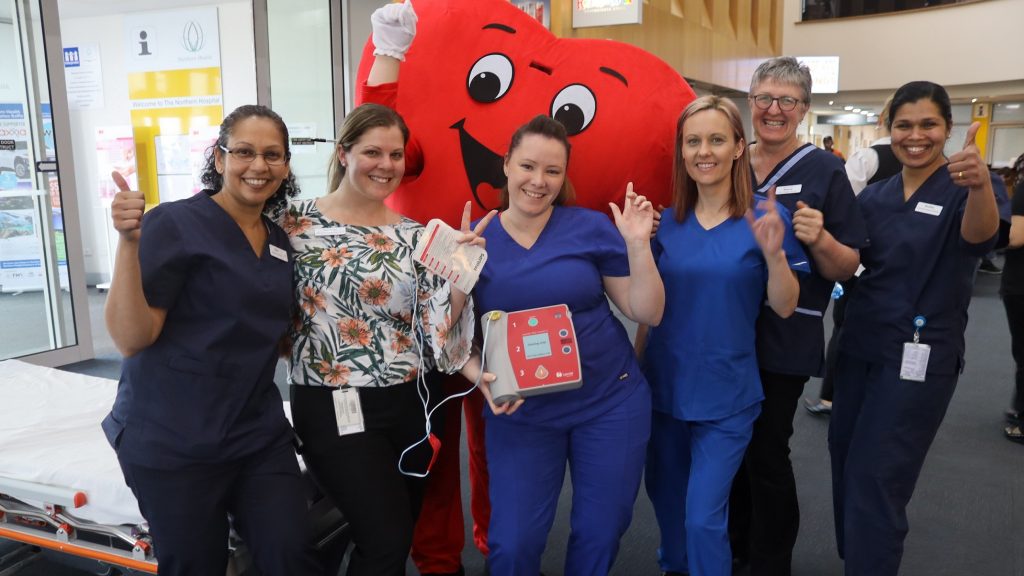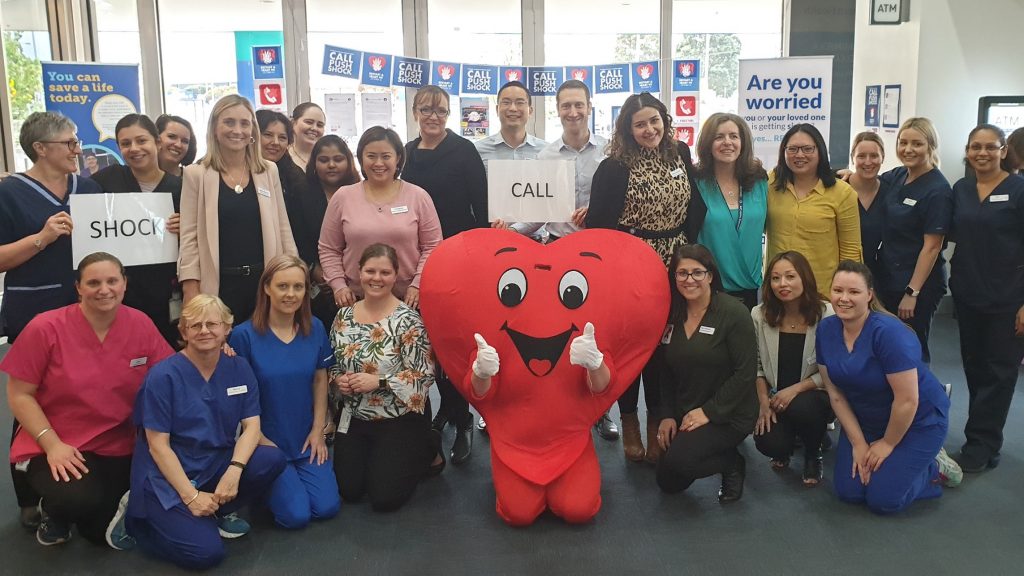 October 18, 2019
October 18, 2019On Wednesday, Northern Health celebrated World Restart a Heart Day and invited the community to get involved.
Restart a Heart Day is a global initiative to raise awareness and education of CPR in the community to help save more lives.
23,000 Australians suffer a cardiac arrest every year. That’s 63 people every day, but only one in 10 survive.
Would you know what to do if someone you know suffers a cardiac arrest?
As a bystander, if you know how to perform CPR, you can help to improve survival rates whilst waiting for emergency services to arrive.
Clinical Deterioration and Resuscitation Coordinator, Narkitaa Van Ekeren said, “Families often express regret for not knowing how to perform effective CPR on a loved one following a cardiac arrest.”
To help empower the community, our staff provided hands on education and training to the general public at Northern Hospital, Broadmeadows Hospital and Bundoora Centre, teaching them how to perform CPR and how to use an AED (automated external defibrillator).
A flash mob dance also thrilled patients, visitors and staff in the Northern Hospital foyer, which was performed to demonstrate the correct rhythm of CPR – using the beat of the music.
The flash mob included an array of clinical and non clinical staff – nurses, doctors, administration and executive staff took part in the fun – as well as a giant dancing heart!
“It’s important to know what to do in an emergency. Following these three simple steps – call 000, start CPR and use an AED (automated defibrillator) if available – can help save a life,” Narkitaa added.
- Call – 000
If someone is unconscious and not breathing normally, call 000. The call taker will guide you through how to start CPR.
- Push – start CPR
This is vital to provide circulating blood to the brain – anyone can perform CPR.
- Shock – connect a defibrillator (if available)
Automated external defibrillator (AED) should be used if available. This checks the heart rhythm and will guide you through delivering a shock to restore the normal rhythm.





